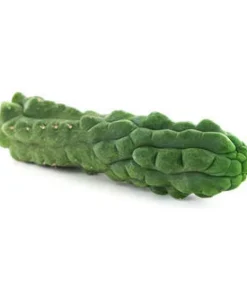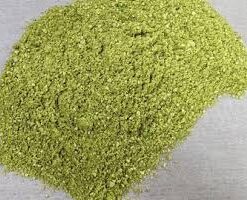San Pedro (Echinopsis pachanoi) ‘Monstrose’
$32.00 Original price was: $32.00.$28.66Current price is: $28.66.
Exploring the Benefits of Peyote Cactus—Buy Peyote Cactus Online
Peyote cactus, scientifically known as Lophophora williamsii, has been utilized for centuries by Indigenous cultures in North America for its medicinal and spiritual properties. This small, spineless cactus contains mescaline, a powerful psychoactive compound that induces hallucinogenic effects. The benefits of peyote are multifaceted, encompassing medicinal, therapeutic, and cultural dimensions.
- Medicinal Benefits of Peyote Cactus: Historically, peyote has been employed to treat various ailments such as snake bites, skin conditions, and general pain relief. Indigenous peoples have relied on it for its purported healing properties, which may include anti-inflammatory effects and pain management. Modern research is beginning to explore these traditional uses more rigorously, although the Schedule 1 classification of peyote in the U.S. complicates scientific study. The alkaloids present in peyote, particularly mescaline, interact with serotonin receptors in the brain, potentially offering new avenues for treating mental health disorders like depression and anxiety.
-
Therapeutic Uses of Peyote: Beyond its medicinal applications, peyote is recognized for its therapeutic potential in mental health. Anecdotal evidence suggests that the psychedelic experience induced by mescaline can lead to profound personal insights and emotional healing. Users often report enhanced sensory perceptions and a deeper connection to their surroundings during peyote ceremonies. The cultivation of peyote itself can also promote mindfulness and personal growth, as caring for the plant requires patience and attention.
-
Cultural Significance Of Peyote Cactus: Peyote plays a crucial role in the spiritual practices of many Native American tribes. Its use is often embedded in ceremonial contexts that foster communal bonds and cultural identity. The act of consuming peyote is seen not only as a means to achieve altered states of consciousness but also as a pathway to spiritual enlightenment and connection with ancestral traditions.
Introduction To Peyote Cactus-San Pedro (Echinopsis pachanoi) ‘Monstrose’
Echinopsis pachanoi, commonly known as San Pedro cactus, is a columnar cactus native to the Andes Mountains of South America. This species has been utilized for over 3,000 years for its psychoactive properties, primarily due to the presence of mescaline, an alkaloid responsible for its hallucinogenic effects. San Pedro is known for its rapid growth compared to other mescaline-containing cacti, such as peyote, making it more accessible for cultivation and use in spiritual practices.
Historically, San Pedro has played a significant role in the medicinal and religious practices of indigenous cultures in Peru. Archaeological evidence suggests its use dates back to at least 6800-6200 BCE, with representations found in ancient artifacts from various cultures, including the Chavín and Moche civilizations. These cultures employed San Pedro in rituals aimed at healing and spiritual enlightenment, often under the guidance of shamans who used it to connect with spiritual realms and facilitate personal transformation.
In contemporary settings, San Pedro is experiencing a resurgence as individuals seek alternative methods for self-discovery and healing. Modern users often participate in guided ceremonies that blend traditional practices with contemporary spiritual exploration. The experiences induced by San Pedro can vary widely, encompassing profound emotional insights, vivid visual hallucinations, and a deep sense of connectedness to nature and the universe.
The cultivation of San Pedro is relatively straightforward due to its fast growth rate. Enthusiasts often grow it from seeds or cuttings, ensuring they provide the right conditions of sunlight and well-draining soil. As interest in mescaline cacti grows, so does the importance of sustainable practices to protect these plants from overharvesting and habitat loss. Overall, Echinopsis pachanoi remains a vital part of both ancient traditions and modern spiritual journeys.
Benefits of Consuming San Pedro (Echinopsis pachanoi) ‘Monstrose’ Peyote Cactus
San Pedro (Echinopsis pachanoi) ‘Monstrose’ is a unique variant of the traditional San Pedro cactus, renowned for its distinctive growth patterns and cultural significance. This rare mutant variety not only captivates cactus enthusiasts with its unpredictable shapes but also offers numerous benefits, both spiritual and practical.
- Cultural and spiritual significance: San Pedro has been revered for thousands of years in Andean culture, often referred to as “huachuma.” It is traditionally used in shamanic rituals to facilitate spiritual growth and healing. The ‘Monstrose’ variety, like its standard counterpart, contains mescaline, a psychoactive compound that can induce altered states of consciousness. Users often report profound experiences that foster introspection, creativity, and emotional healing. The plant is considered a “teacher,” guiding individuals through personal transformation and deeper understanding of themselves and the universe.
-
Therapeutic Potential of Peyote Cactus: Research suggests that mescaline may have therapeutic applications for mental health conditions such as depression, anxiety, and addiction. The consumption of San Pedro tea, which is made from the cactus, has been linked to enhanced psychological well-being. Many users find that it helps reduce stress and promotes a sense of calmness, making it a valuable tool for those seeking mental clarity and emotional balance.
-
Aesthetic Appeal and Low Maintenance: In addition to its spiritual and therapeutic benefits, San Pedro ‘Monstrose’ is visually striking. Each cactus grows in unique patterns, making it a fascinating addition to any collection. It thrives in various conditions, requiring minimal care—ideal for both novice and experienced gardeners. Its drought-resistant nature contributes to its sustainability, serving as a living example of resilience in harsh environments.
Be the first to review “San Pedro (Echinopsis pachanoi) ‘Monstrose’” Cancel reply
Related products
Mescaline Cactus
Mescaline Cactus
Mescaline Cactus
Mescaline Cactus
Mescaline Cactus
Mescaline Cactus
Mescaline Cactus




















Reviews
There are no reviews yet.